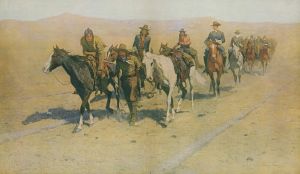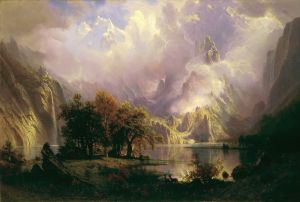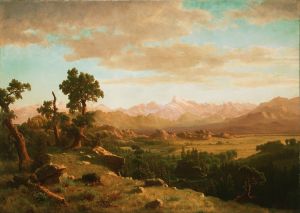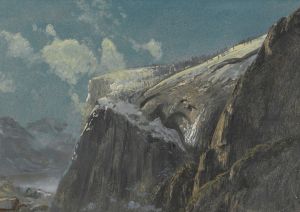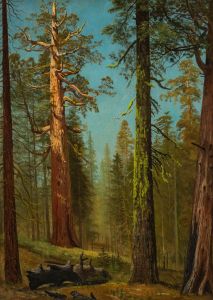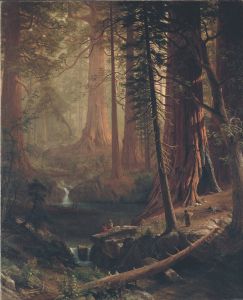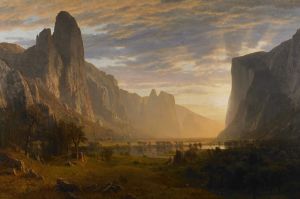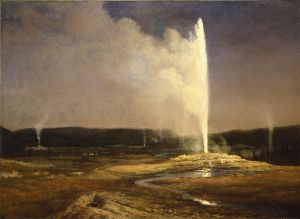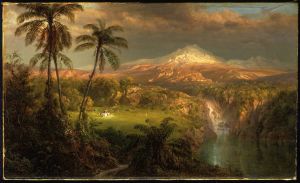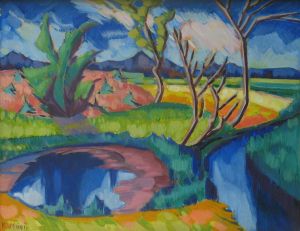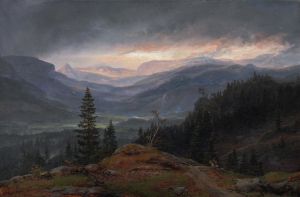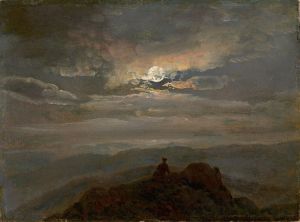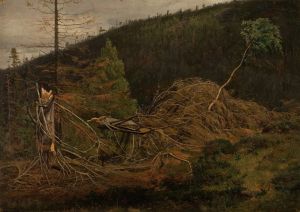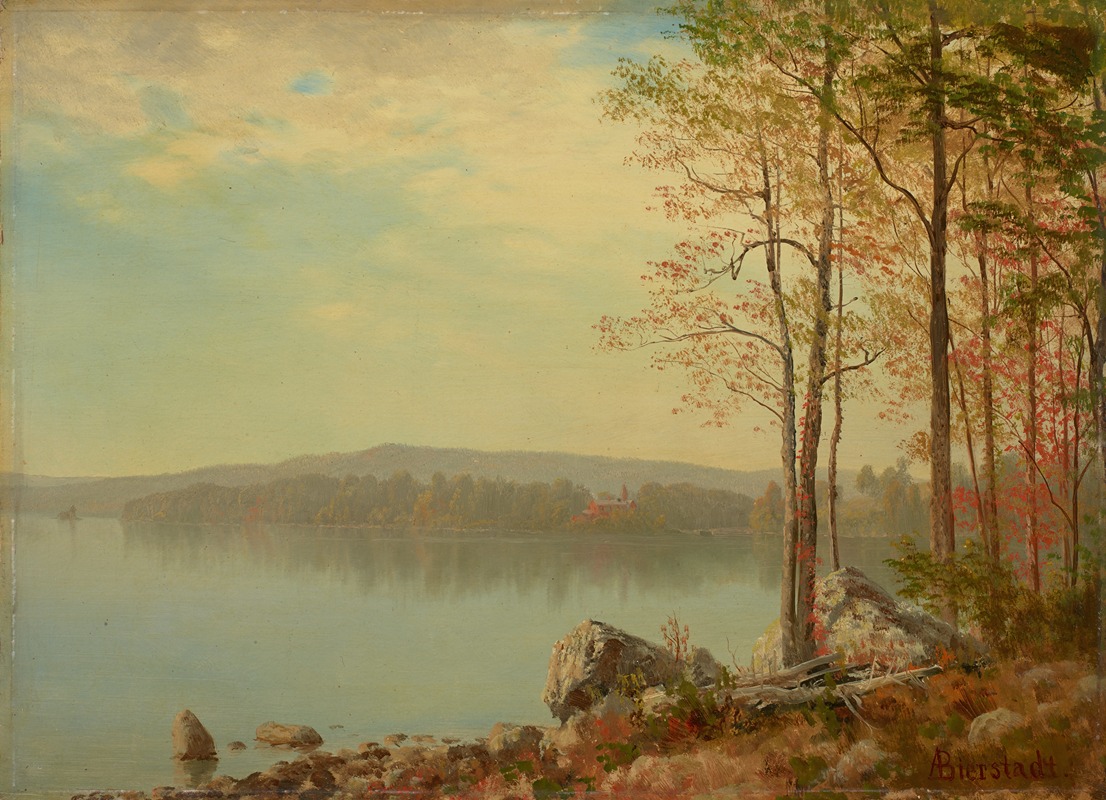
Landscape
A hand-painted replica of Albert Bierstadt’s masterpiece Landscape, meticulously crafted by professional artists to capture the true essence of the original. Each piece is created with museum-quality canvas and rare mineral pigments, carefully painted by experienced artists with delicate brushstrokes and rich, layered colors to perfectly recreate the texture of the original artwork. Unlike machine-printed reproductions, this hand-painted version brings the painting to life, infused with the artist’s emotions and skill in every stroke. Whether for personal collection or home decoration, it instantly elevates the artistic atmosphere of any space.
Albert Bierstadt was a renowned 19th-century American painter known for his large landscapes of the American West. His works are characterized by their grand scale, dramatic use of light, and meticulous attention to detail. Bierstadt was part of the Hudson River School, a group of artists who focused on romantic landscapes, and he played a significant role in shaping the perception of the American frontier.
"Landscape" by Albert Bierstadt is one of his many paintings that capture the beauty and majesty of the natural world. While specific details about this particular painting may not be as widely documented as some of his other works, Bierstadt's landscapes typically depict expansive vistas, often featuring mountains, forests, and bodies of water. His paintings are celebrated for their ability to convey the vastness and grandeur of the American wilderness.
Bierstadt was born in Germany in 1830 and emigrated to the United States with his family in 1832. He grew up in New Bedford, Massachusetts, and later returned to Germany to study painting at the Düsseldorf School. Upon his return to the United States, Bierstadt joined several expeditions to the American West, where he gathered sketches and studies that would later inform his large-scale studio paintings.
His travels took him to places like the Rocky Mountains, the Sierra Nevada, and Yosemite Valley, which became recurring subjects in his work. Bierstadt's paintings were instrumental in bringing the beauty of these remote landscapes to the attention of the American public and contributed to the growing interest in westward expansion during the 19th century.
Bierstadt's technique involved a combination of on-site sketches and photographs, which he used as references for his studio compositions. He was known for his use of luminism, a style characterized by the depiction of light and atmosphere, which he employed to create dramatic and almost theatrical effects in his paintings. This approach helped to evoke a sense of awe and wonder in viewers, capturing the sublime qualities of the natural world.
Throughout his career, Bierstadt achieved significant success and recognition. His works were exhibited in major art institutions, and he received numerous commissions from wealthy patrons. However, his reputation experienced fluctuations over time, with some critics dismissing his work as overly romanticized or lacking in authenticity. Despite this, Bierstadt's paintings have endured as iconic representations of the American landscape.
Today, Bierstadt's works are held in prestigious collections, including the Metropolitan Museum of Art, the Smithsonian American Art Museum, and the National Gallery of Art. His paintings continue to be celebrated for their artistic merit and historical significance, offering a glimpse into the 19th-century American frontier and the cultural attitudes of the time.
While specific information about "Landscape" by Albert Bierstadt may be limited, it is likely that the painting embodies the qualities that define his oeuvre: a meticulous attention to detail, a dramatic use of light, and a profound appreciation for the natural world. Bierstadt's legacy as a landscape painter remains influential, and his works continue to inspire admiration and appreciation for the beauty of the American wilderness.





